AP Biology Unit 4 Vocab Cell Communication and Cell Cycle
1/38
Earn XP
Description and Tags
Vocabulary from Unit 4 of AP Biology, Cell Communication and Cell Cycle
Name | Mastery | Learn | Test | Matching | Spaced |
|---|
No study sessions yet.
39 Terms
Homeostasis
the ability to maintain a relatively stable internal state that persists despite changes in the world outside.
Negative Feedback Loop
homeostasis typically involves BLANKs, which counteract changes of various properties from their target values, known as set points. It acts to oppose the stimuli that trigger them.
Ex: when sensors such as nerve cells sense that body temp is too high, they relay this to the temperature regulatory control center in your brain, which processes the info and activates effectors (sweat glands, heavy breathing, more blood flow to skin) to oppose the stimulus by bringing body temp down.
Positive Feedback Loop
These amplify their initiating stimuli, moving the system away from its starting point. They are found in processes that need to be pushed to completion, such as childbirth.
Plasmodesmata
These are connections between plant cells that allow material to be transported from cell-to-cell, allowing cells enclosed by a cell wall to communicate.
Signal Transduction Pathway
This is a pathway of several steps that creates a response from a stimulus in the cell.
They allow different types of cells to respond differently to the same signal molecule.
They amplify the effect of a signal molecule
They convert a signal on a cells surface to a specific cellular response.
Interphase
The stage in the life cycle of a cell where the cell grows and DNA is replicated. The cell spends 90% of its life in this stage, where it grows and prepares for mitosis.
It includes:
G0 sometimes, a resting state cells enter during G1 if they need to.
G1: growth
S: growth and DNA replication
G2: growth and final prep. for division
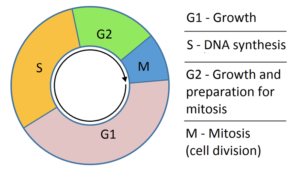
M - phase
This includes mitosis (division of nucleus) and cytokinesis (division of cytoplasm).
Mitosis
This is the division of the nucleus
It plays a role in growth, tissue repair, and asexual reproduction. It ensures the transfer of a complete genome from a parent cell to 2 genetically identical daughter cells.
Its steps are:
Prophase, Metaphase, Anaphase, and Telophase
(Pee on the MAT)
Prophase
the nuclear envelope begins to disappear and DNA coils into visible chromosomes.
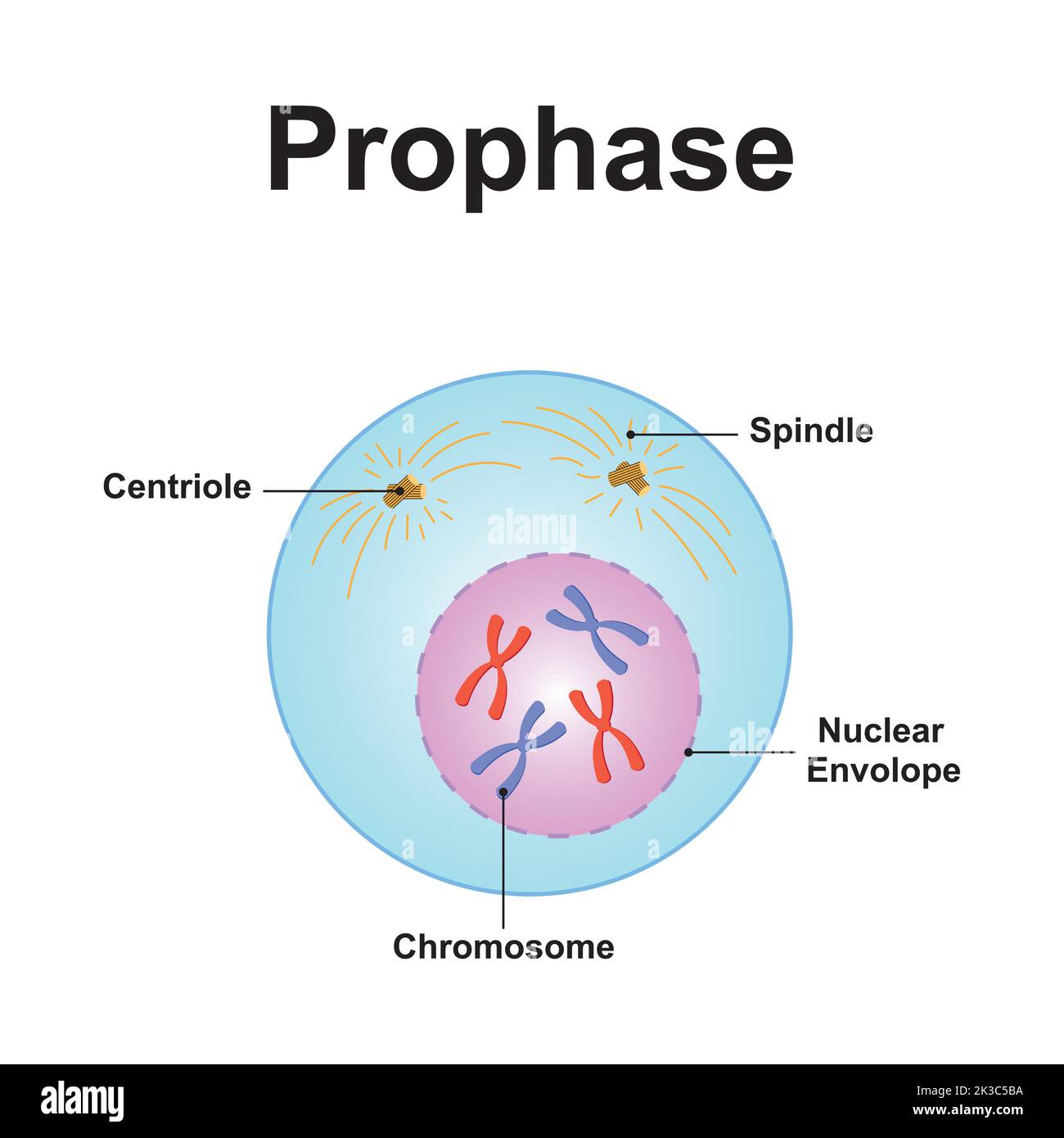
Metaphase
Fibers (mitotic spindle) align double chromosomes across the center of the cell
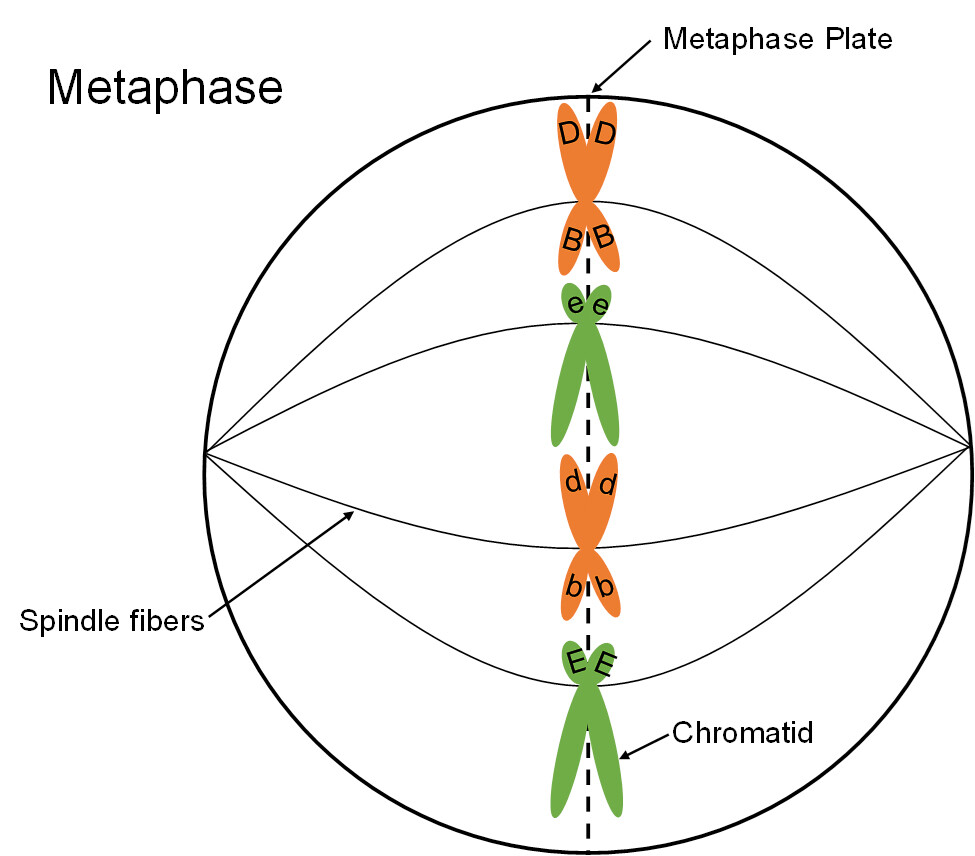
Anaphase
fibers separate the double chromosomes into single chromosomes (chromatids)
Chromosomes separate at the centromere
Single chromosomes (chromatids) migrate to opposite sides of the cell
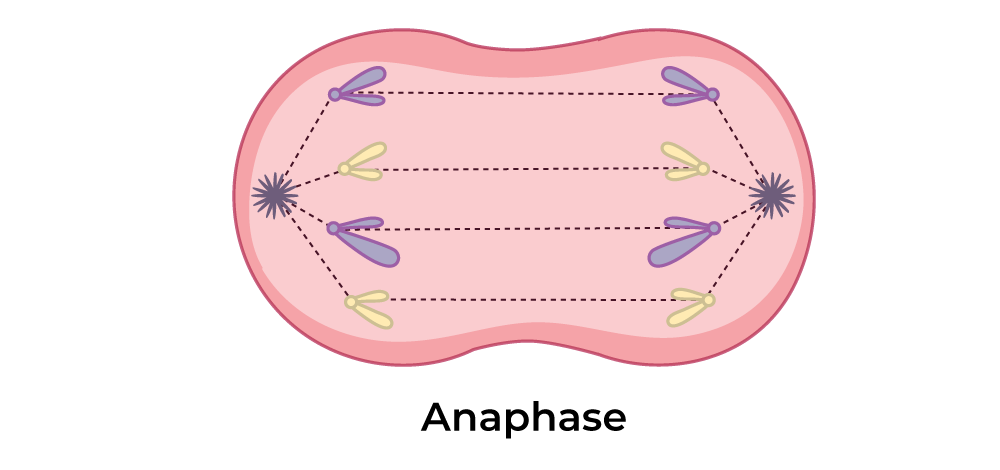
Telophase
nuclear envelope reappears and establishes 2 separate nuclei
each nucleus contains a complete genome
chromosomes will begin to uncoil
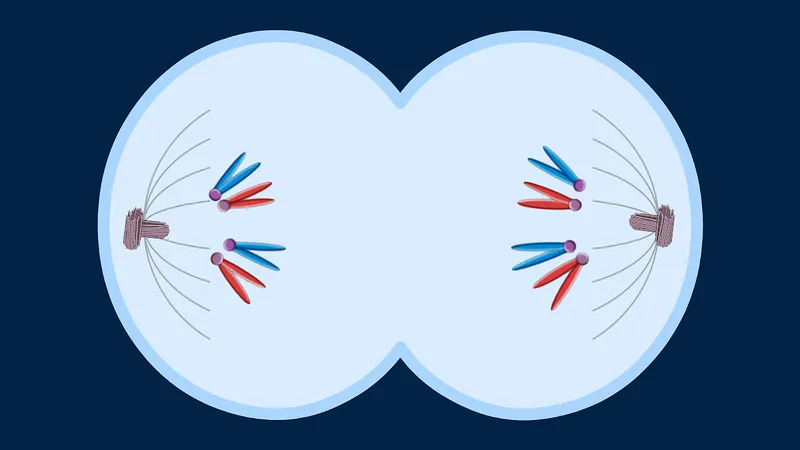
Cytokinesis
This is the division of the cytoplasm that occurs after mitosis. The cell has now separated into 2 daughter cells, each containing identical genomes.
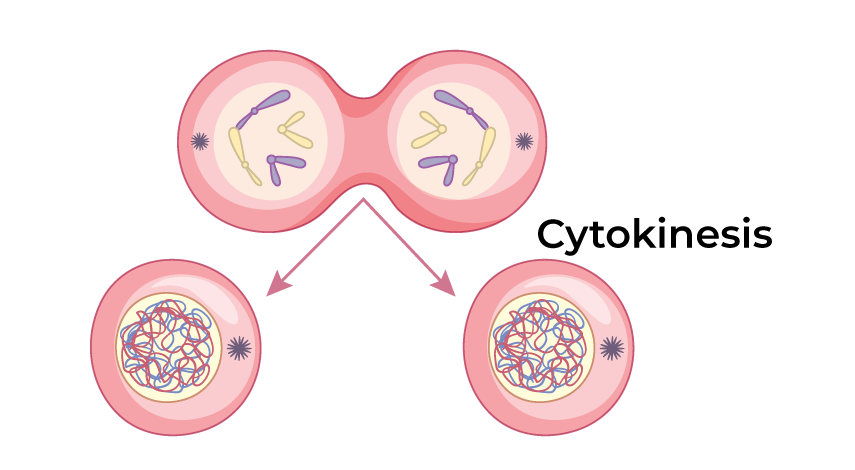
Short distance communication
Cells send out regulators
target cell is within a short distance of the signal (local)
often used to communicate w/ cells of the same type
Long distance communication
Target cell isn’t in the same area as the cell emitting the signal.
signal travels a long distance to reach the target cell
often used to signal cells of another type
Reception
A ligand (signaling molecule) binds to a receptor and causes a conformational shape change. A G protein coupled receptor is an example of this.
Steroid Hormone
Release: simple diffusion
Receptor: intracellular
example: testosterone, estrogen
Protein Hormone
Release: exocytosis
Receptor: extracellular
Example: insulin
Transcription Factors
These are proteins involved in the process of converting, or transcribing, DNA into RNA. This is an example of one of the responses evoked by a signal transduction pathway.
Secondary Messengers
These are small molecules and ions that relay signals received by cell-surface receptors to effector proteins. Examples include cAMP and CA^2+
Meiosis
A type of cell division that reduces the number of chromosomes in the parent cell by half and produces four gamete cells. (genetically different daughter cells)
Crossing over happens during in BLANK in Prophase 1, when chromosomes of the same type are lined up. When two chromosomes — one from the mother and one from the father — line up, parts of the chromosome can be switched.
The chromosomes follow the law of independent assortment, where the alleles of genes will separate into gametes independently of one another; that is, they do not influence each other regarding the way that they are sorted.
Meiosis 1: the number of cells is doubled but the number of chromosomes is not. This results in 1/2 as many chromosomes per cell.
Meiosis 2: this division is like mitosis; the number of chromosomes does not get reduced.
Cancer Cells
Normal cells divide only when they receive a set of appropriate signals whereas BLANK cells divide themselves despite the absence of those signals, and they are resistant to the signals telling them to self-destruct, known as apoptosis or programmed cell death. Instead of dying, they multiply out of control and continue to reproduce other abnormal cells. These cells invade body parts, such as the breast, liver, lungs and pancreas. The cells can divide in the absence of growth factors and are not inhibited by density, however, they still rely on enzymes for DNA replication.
Cause: The underlying basis for this altered behavior is a series of genetic and cellular changes, including mutations in genes whose protein products normally regulate the cell cycle. These gene products are often proteins that function in cell signaling pathways.
Apoptosis
This is programmed cell death.
it participates in fragmentation of the DNA inside the damaged cell.
Extensive damage to a cell's DNA or misfolding of proteins can trigger a built-in cell suicide program.
Macrophages clean up the remains.
This plays a crucial role in embryonic development, including formation of the nervous system and the separation of digits.
Apoptosis is a part of the normal functioning of the mature immune system.
cAMP
This is a small, hydrophilic molecule which is an important intracellular second messenger molecule regulated in many physiological processes. Typically, BLANK immediately activates protein kinase A, which phosphorylates various other proteins. Kinases are a type of enzyme that activates proteins by transferring a phosphate group from ATP. Kinases are involved in many signaling pathways in a wide variety of organisms.
Ligand gated ion channel
a receptor closes an ion channel, and when a ligand binds to it, the shape changes and the channel opens
Phosphorylation Cascade
a phosphate is added to the proteins along the cascade that allows the signal to move through transduction, chain reaction where one enzyme phosphorylates another ex: protein kinase phosphorylates a protein
Adenylyl Cyclase
catalyzes ATP to cAMP
Growth Factor
A substance made by the body that functions to regulate cell division and cell survival. Some growth factors are also produced in the laboratory and used in biological therapy.
Cell Cycle Arrest
This is a stopping point in the cell cycle, where it is no longer involved in the processes surrounding duplication and division. cellular senescence, BLANK occurs in G1 and possibly G2 phase of the cell cycle. During BLANK, the nutrient-sensing pathways like mTOR (mechanistic target of Rapamycin) continue to be active without cell proliferation and growth, which initiates cellular senescence (a process by which a cell ages and permanently stops dividing but does not die.)
Post Mitotic Cells
These are cells that cannot divide. They stay in the G0 phase. Examples include nerve cells, and muscle cells.
Necrosis
This is unprogrammed cell death caused by injury, trauma, or infection. You have to clean out this tissue from patients.
Autophagy
Cell programs the lysosomes to engulf the damaged organel or infectious agent. The cell will survive, and won’t need to undergo apoptosis.
Cyclins
A group of related proteins associated with specific phases of the cell cycle. They control progression through cell-cycle checkpoints by phosphorylating and inactivating target substrates. The BLANK associate with different CDKs to provide specificity of function at different times during the cell cycle.
They can be produced to promote cell cycle progression and degraded to inhibit cell cycle progression.
Cyclin Dependent Kinases
These are a group of enzymes involved in cell cycle regulation. They require cyclin binding for activation. They phosphorylate substrates and promote certain cell cycle activities.
Inducer
These bind to repressors, causing them to change shape and preventing them from binding to DNA. Therefore, they allow transcription, and thus gene expression, to take place.
Repressor
These proteins bind to the DNA strand and prevent RNA polymerase from being able to attach to the DNA and synthesize mRNA. Inducers bind to BLANKs, causing them to change shape and preventing them from binding to DNA.
Haploid
These cells contain only one set of Chromosomes (n) and are formed in the process of meiosis. Examples are usually reproductive cells (gametes or spores)
Diploid
These cells contain two sets of chromosomes (one from each parent) (2n). They are typically body or somatic cells.
Nondisjunction
This means that a pair of homologous chromosomes has failed to separate or segregate at anaphase so that both chromosomes of the pair pass to the same daughter cell. This probably occurs most commonly in meiosis, but it may occur in mitosis to produce a mosaic individual.